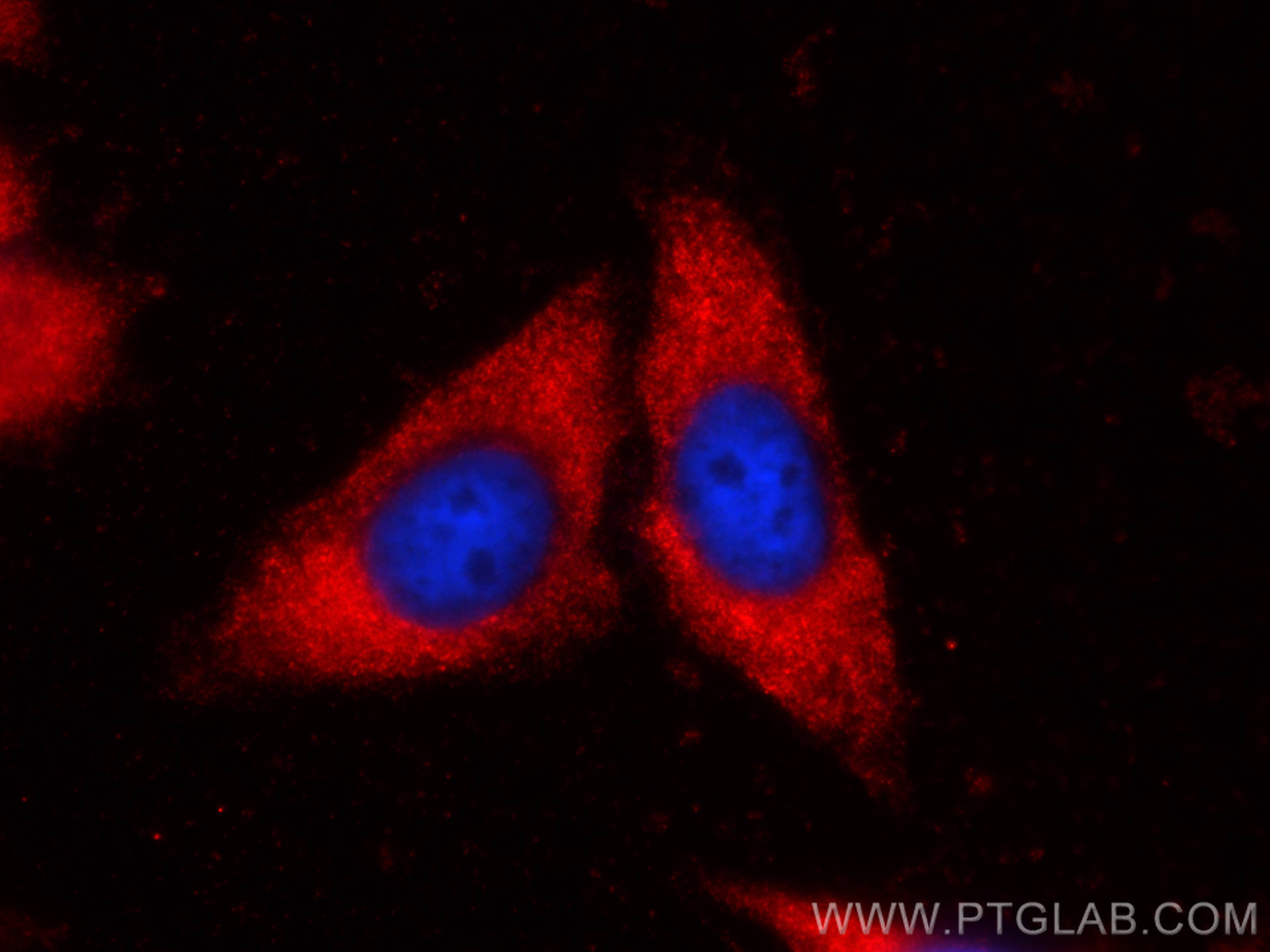Validation Data Gallery
Filter:
Tested Applications
| Positive IF/ICC detected in | HepG2 cells |
Recommended dilution
| Application | Dilution |
|---|---|
| Immunofluorescence (IF)/ICC | IF/ICC : 1:50-1:500 |
| It is recommended that this reagent should be titrated in each testing system to obtain optimal results. | |
| Sample-dependent, Check data in validation data gallery. | |
Product Information
CL594-67391 targets FGL1 in IF/ICC applications and shows reactivity with Human, pig samples.
| Tested Reactivity | Human, pig |
| Host / Isotype | Mouse / IgG1 |
| Class | Monoclonal |
| Type | Antibody |
| Immunogen | FGL1 fusion protein Ag8581 相同性解析による交差性が予測される生物種 |
| Full Name | fibrinogen-like 1 |
| Calculated molecular weight | 312 aa, 36 kDa |
| Observed molecular weight | 36 kDa |
| GenBank accession number | BC007047 |
| Gene Symbol | FGL1 |
| Gene ID (NCBI) | 2267 |
| RRID | AB_3673517 |
| Conjugate | CoraLite®594 Fluorescent Dye |
| Excitation/Emission maxima wavelengths | 588 nm / 604 nm |
| Form | Liquid |
| Purification Method | Protein G purification |
| UNIPROT ID | Q08830 |
| Storage Buffer | PBS with 50% glycerol, 0.05% Proclin300, 0.5% BSA , pH 7.3 |
| Storage Conditions | Store at -20°C. Avoid exposure to light. Stable for one year after shipment. Aliquoting is unnecessary for -20oC storage. |
Background Information
Fibrinogen-like 1 (FGL1), also termed hepatocyte-derived fibrinogen-related protein 1 (HFREP1) or hepassocin, is a predominantly liver expressed protein that has been implicated as both a hepatoprotectant and a hepatocyte mitogen. FGL1 expression is decreased in hepatocellular carcinoma (HCC), and it may play a role in the development of hepatocellular carcinomas.
Protocols
| Product Specific Protocols | |
|---|---|
| IF protocol for CL594 FGL1 antibody CL594-67391 | Download protocol |
| Standard Protocols | |
|---|---|
| Click here to view our Standard Protocols |
